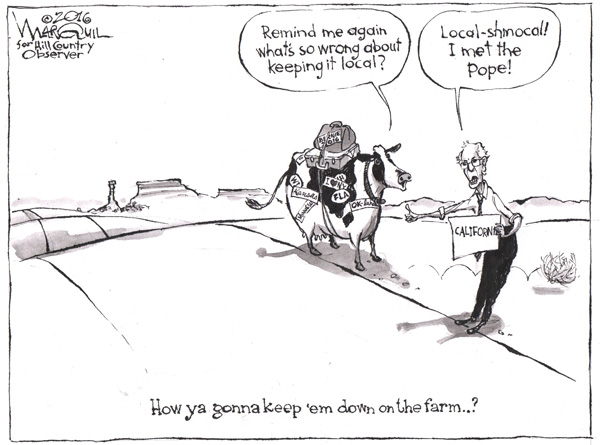Editorial May 2016
E D I T O R I A L
On pesticide data, public deserves better
The possibility that the environment and human health might be at risk from the widespread use of synthetic pesticides has been a matter of public concern for at least the 50-plus years since the publication of Rachel Carson’s “Silent Spring.”
Carson’s pioneering work helped give rise to the modern environmental movement, the creation of the U.S. Environmental Protection Agency and the rise of organic agriculture. And it led to the phasing out of some particularly toxic compounds such as DDT.
But despite all of that, our society continues to use plenty of synthetic toxins to kill unwanted bugs, weeds, microbes and even molds. Some of these chemicals still are quite powerful, and plenty of concern remains that pesticides may pose a hazard to life forms beyond their intended targets.
So it’s surprising to learn that, despite our modern system of environmental regulation, the information available about pesticide use in our region actually is quite limited. As a story in this issue details, New York, Vermont and Massachusetts all collect reports from commercial pesticide applicators, but the data resulting from these efforts has significant gaps and in some cases is quite old – if it’s available to the public at all.
New York’s pesticide reporting law, adopted in 1996 with great fanfare, was expected to produce a wealth of new data about which pesticides were being applied, in what quantities and where. Supporters of the law included breast cancer activists who hoped the data could be used to investigate whether heavy use of pesticides in some areas could be correlated with an increased incidence of cancer and other ailments.
New York’s reporting system has yielded a pesticide database that’s searchable by active ingredient, but the database so far contains only three years’ worth of information from more than a decade ago, covering 2003-05. The latest data of any kind that’s publicly available is from 2009, and it simply tallies up the total number of gallons or pounds of various brand-name pesticides used – without regard to how concentrated or dilute the active ingredients in these products might be.
And even though agriculture accounts for an estimated 80 percent of the pesticides used nationally, much of this use isn’t measured in New York’s system, because farmers are exempt from the law’s reporting requirements. Farm use of pesticides is recorded only when professional applicators are called in to do the spraying.
Compared with New York, Vermont’s pesticide reporting system offers more meaningful and up-to-date information, with statewide totals, per pound of active ingredient, organized by the type of application – such as on golf courses, lawns, along highways, and so on. As in New York, though, farmers are exempt from reporting, and because Vermont only provides statewide totals, it’s impossible to tell whether certain towns or areas might be getting a particularly high dosage of specific pesticides.
In Massachusetts, the situation is even more opaque. The state Department of Agricultural Resources collects written reports of pesticide usage from the commercial applicators it regulates, but it simply boxes up these reports and puts them in storage – with no effort to analyze or compile any data for public use. It’s hard to imagine a more pointless exercise in government regulation.
All three states are already collecting at least some information about pesticide use within their borders. What’s needed is a lot more emphasis on useful information and the public’s right to know. 

